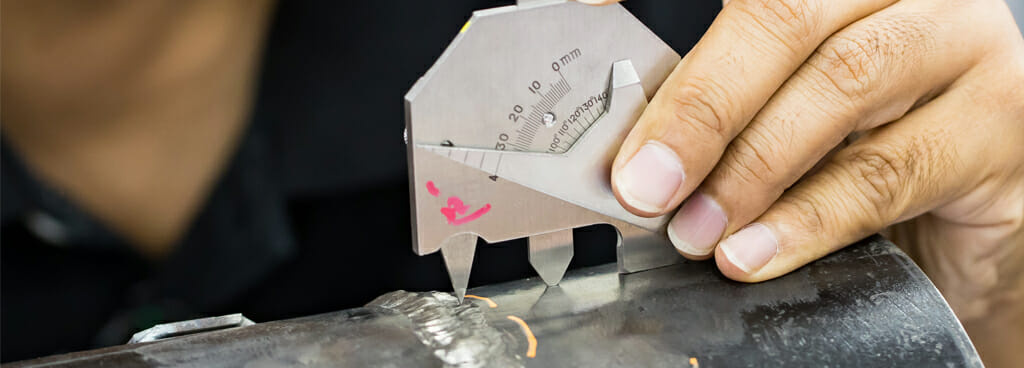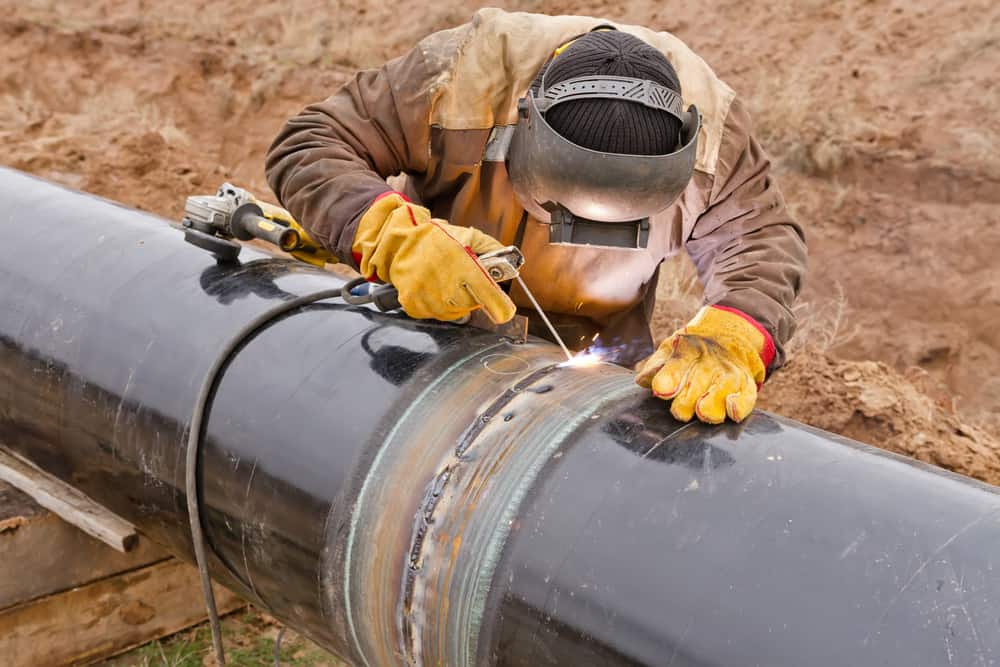Understanding the Basics of Welding Examination to Ensure High Quality and Security
In the world of modern design, welding examination stands as a foundation for making certain both the top quality and safety of structural productions. The procedure entails a meticulous analysis of bonded joints, employing sophisticated methods such as radiographic and ultrasonic testing to detect hidden blemishes. The knowledge of licensed examiners is crucial, as they link the space in between theoretical standards and sensible application. Their function extends beyond mere detection, encompassing the documentation and interaction of searchings for to pertinent stakeholders. What are the nuances of these evaluation methods that make them vital for keeping structural honesty?

Importance of Welding Inspection
In the realm of industrial construction, the importance of welding evaluation can not be overemphasized. Welding inspection plays a vital function in making sure the honesty, safety and security, and longevity of welded structures. Provided the varied applications of welding in industries such as construction, auto, aerospace, and shipbuilding, the demand for rigid quality assurance steps is extremely important. Appropriate inspection makes sure that welds fulfill defined requirements and codes, which is necessary for preventing architectural failures that could lead to tragic effects.
The process of welding naturally involves intricate variables, consisting of temperature level, product residential or commercial properties, and environmental problems, every one of which can affect the high quality of the weld. A complete assessment recognizes issues such as splits, porosity, and insufficient blend, which can compromise the strength and integrity of the weld. By identifying these issues early, restorative actions can be taken, thus minimizing the threat of failing and linked expenses.
Furthermore, welding examination adds to regulative compliance, as lots of sectors are controlled by stringent security requirements and standards. Failure to comply with these guidelines can result in monetary fines and lawful obligations. Eventually, welding evaluation not just safeguards physical frameworks however additionally shields human lives and upholds market reputations.

Secret Welding Inspection Approaches
Although welding inspection is crucial to making sure the top quality and security of welded structures, it is the certain methods employed that determine the effectiveness of the evaluation procedure. Trick welding evaluation techniques can be generally categorized right into non-destructive screening (NDT) and devastating screening. Non-destructive testing approaches such as visual inspection, ultrasonic testing, radiographic testing, magnetic particle testing, and fluid penetrant screening are primarily utilized to assess the residential or commercial properties of a weld without creating damage. Visual evaluation is typically the very first step, including an extensive examination of the weld's surface for flaws like splits or porosity.
Ultrasonic and radiographic testing are advanced techniques that enable inspectors to examine the interior stability of the weld. Ultrasonic testing utilizes high-frequency acoustic waves to identify stoppages, while radiographic testing utilizes X-rays or gamma rays to produce a picture of the weld's interior. Magnetic bit testing and liquid penetrant testing are surface evaluation techniques used to situate surface area and near-surface problems. In comparison, devastating testing methods involve physically cutting the weld or breaking to examine its mechanical properties. These extensive assessment approaches make sure that welds fulfill industry standards and security needs, thereby guaranteeing structural stability and performance.
Duty of Certified Examiners
Licensed examiners play an essential function in the welding examination procedure, making certain that all welds follow strict sector standards and security regulations. Their expertise is important in identifying problems or irregularities that might compromise the architectural stability of a weld. By diligently checking out each weld, licensed examiners assist protect against prospective failures that might bring about expensive repair work or dangerous mishaps.
To come to be certified, assessors need to undertake extensive training and screening, which familiarizes them with various welding techniques, products, and screening methods. This thorough understanding allows them to review weld top quality successfully and make educated judgments regarding their security and reliability. Certified inspectors are skillful in interpreting blueprints and specifications, making certain that the welding job lines up with the project's design needs.
An integral part of their duty is to record their findings extensively, supplying a comprehensive record of the assessment procedure. Their contribution is vital in keeping high levels of quality and safety and security in welding procedures.

Devices Made Use Of in Welding Assessment
Welding examiners count on his comment is here a range of specialized tools to execute their responsibilities effectively, ensuring each weld meets the necessary standards. Amongst these devices, aesthetic assessment aids like multiplying glasses and mirrors are essential, enabling assessors to very closely examine welds for surface area flaws such as splits, porosity, and undercut. Calipers and fillet weld determines are vital for measuring weld dimensions to validate compliance with style specs.
Advanced devices extend past aesthetic aids, including non-destructive testing (NDT) tools. Ultrasonic screening devices are essential in identifying subsurface defects, using sound waves to expose inner stoppages without jeopardizing the weld's integrity. Likewise, radiographic screening uses X-rays or gamma rays to catch pictures of a weld's interior, highlighting possible flaws.
Magnetic particle screening is another essential device, specifically for detecting surface and near-surface interruptions in ferromagnetic products. By applying ferrous particles and magnetic fields, inspectors can recognize defects that might otherwise be unnoticeable.
Dye penetrant examination is often made use of for non-ferrous materials, offering a contrast-enhanced visual check for surface-breaking issues. Welding Inspection Madison. With each other, these tools make it possible for welding inspectors to thoroughly assess weld quality, guaranteeing security and reliability in various applications across sectors
Making Certain Structural Integrity

Welding procedures must follow well-known criteria and codes, such as those specified by the American Welding Culture (AWS) or the International Company for Standardization (ISO) These guidelines ensure that the welds can hold up against ecological aspects and functional stresses. Certified and accredited welders play a critical role in this procedure, as their know-how makes certain that methods are used appropriately, minimizing flaws such as cracks, porosity, and insufficient fusion.
Post-weld assessment is one more vital component of verifying structural honesty. Non-destructive testing (NDT) techniques, consisting of ultrasonic testing and radiographic testing, are utilized to discover subsurface defects without compromising the bonded structure. These inspections confirm that the welds satisfy the needed quality criteria, providing guarantee of their toughness and reliability. Inevitably, ensuring architectural integrity in welding not official statement just safeguards human lives but likewise protects financial investments and enhances the durability of crafted structures.
Final Thought
The basics of welding examination are necessary for preserving the high quality and safety of bonded structures. The usage of specialized devices even more enhances the evaluation process, inevitably securing human lives and lengthening the lifespan of welded buildings.
Welding assessment plays an important function in making certain the integrity, safety, and long life of bonded frameworks.Although welding inspection is vital to guaranteeing the high quality and safety of welded structures, it is the specific techniques used that determine click here to read the efficiency of the inspection procedure. Trick welding evaluation methods can be generally classified right into non-destructive testing (NDT) and harmful screening.Licensed assessors play a pivotal role in the welding evaluation procedure, guaranteeing that all welds comply with rigorous market standards and safety policies.The basics of welding examination are vital for maintaining the top quality and safety of bonded structures.